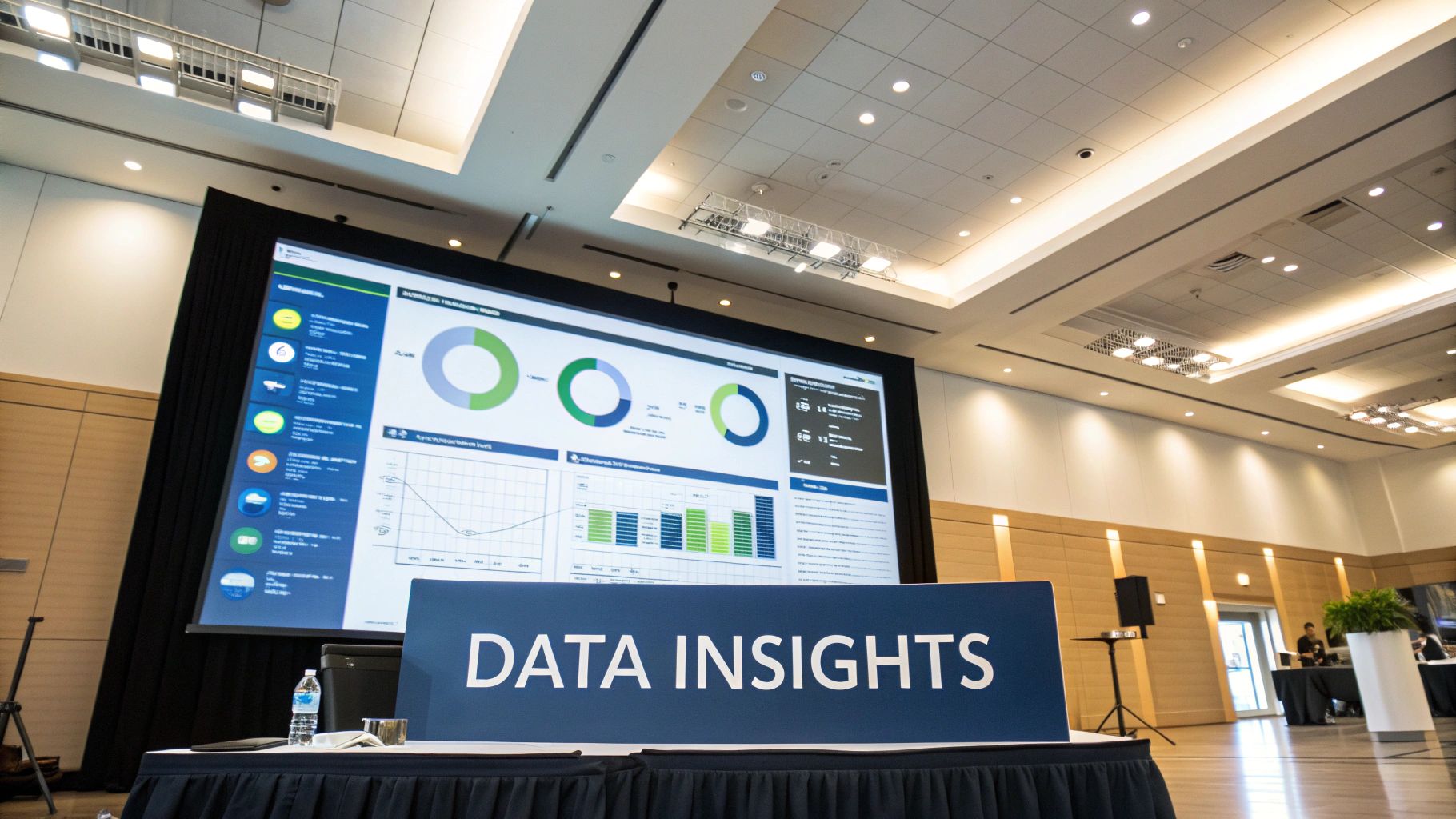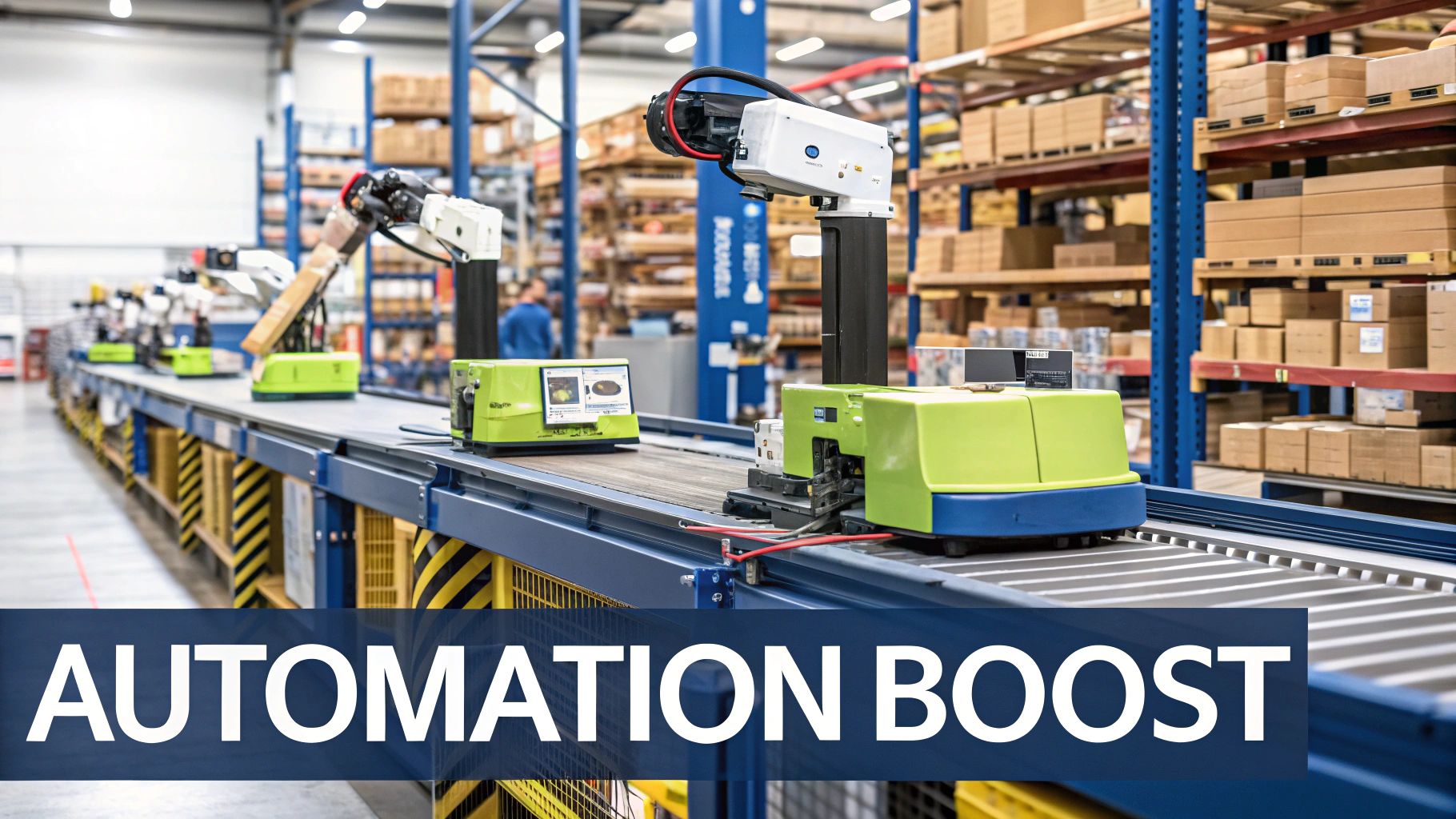Strategic Guide to Operational Efficiency Improvement: Data-Driven Methods That Drive Real Results
Understanding Operational Efficiency Metrics That Matter

Making meaningful improvements to operations requires measuring what truly matters. While many organizations collect endless data points, the key is identifying and tracking metrics that directly connect to business success. Let's explore which metrics actually drive better performance.
Choosing KPIs That Drive Improvement
The most effective KPIs paint a clear picture of current performance while spotting areas ripe for improvement. Cycle time serves as a prime example - by measuring how long processes take from start to finish, companies can identify bottlenecks slowing things down. Similarly, tracking defect rates helps pinpoint exactly where quality issues occur, allowing targeted fixes that reduce costs and boost customer satisfaction.
Resource utilization stands out as another crucial metric to monitor. This shows how efficiently you're using employees, equipment, and other assets. When utilization rates are low, it often signals opportunities to streamline workflows, automate manual tasks, or adjust staffing schedules. The goal is ensuring every resource contributes meaningfully to output.
Customer satisfaction metrics like Net Promoter Score (NPS) must also stay front and center. Happy customers drive revenue growth and build brand reputation through word-of-mouth. That's why operational improvements should always aim to enhance the customer experience, not just internal efficiency.
The financial impact of better operations is easy to see through the operational efficiency ratio. This calculation divides operating expenses by total revenue and multiplies by 100. For example, if a company has $100,000 in operating costs and $1 million in revenue, their ratio is 10% - meaning they spend 10 cents to generate each dollar of revenue. Reducing costs to $90,000 would lower the ratio to 9%, reflecting improved efficiency. Learn more about operational efficiency ratios
Implementing and Utilizing Metrics Effectively
Tracking numbers alone doesn't drive improvement - you need a system for regularly reviewing metrics and taking action. This means setting clear targets, creating detailed plans to achieve them, and following through. For instance, if cycle times are lagging, map out specific process changes and automation opportunities to speed things up.
Getting your team engaged with metrics is also essential. Make sure everyone understands not just what you're measuring, but why it matters to company success. Share progress updates regularly and celebrate wins. When data-driven decision making becomes part of your culture, lasting operational improvements follow naturally.
Transforming Workflows Through Strategic Process Mapping

Creating a process map is just the first step toward meaningful operational improvements. The real value comes from using these visual tools strategically to find opportunities for major efficiency gains. Leading companies use process mapping as a way to deeply analyze their workflows and uncover hidden inefficiencies that basic flowcharts might miss.
Conducting Effective Process Audits
The foundation of strategic process mapping is a thorough process audit. This goes far beyond checking boxes - it requires directly observing how work happens day-to-day. For example, auditors might shadow employees, review system logs, and interview key stakeholders to spot unofficial workarounds, bottlenecks, and missing steps that affect productivity. These detailed audits help target improvements that will have real impact.
A helpful way to evaluate potential changes is by looking at both effort required and expected results. Here's a simple framework:
| Improvement Type | Effort | Potential Return |
|---|---|---|
| Quick Wins | Low | Medium |
| Major Overhauls | High | High |
| Incremental Changes | Medium | Low |
This clear structure helps focus limited resources on changes that will deliver the most value. When you can't do everything at once, it's crucial to tackle the highest-impact items first.
Engaging Teams and Implementing Solutions
Process mapping works best as a team effort that involves the people who do the work every day. Getting input and buy-in from team members throughout the project - from initial mapping through implementation - leads to better solutions and smoother transitions. Regular observation and documentation helps identify specific tasks that are time-consuming, error-prone, or using resources inefficiently. Learn more about operational efficiency. The next step is often automating manual processes to boost productivity.
To maintain momentum over time, keep communicating progress updates, recognizing wins, and adjusting based on feedback from the team. This creates a cycle of continuous improvement rather than one-time fixes. With consistent effort and the right strategic approach, organizations can fundamentally improve their workflows for lasting results.
Driving Business Success Through Digital Technologies

Effective use of digital technology requires more than just buying new software - it means rethinking core business operations. Companies that succeed examine how advanced tools like analytics and automation can make their processes more efficient. For example, some manufacturers now use AI systems to predict machine maintenance needs before failures occur, helping avoid costly downtime. This shift allows organizations to solve problems before they happen rather than just reacting to issues.
Choosing Digital Tools That Drive Results
The key is selecting technologies that clearly support business goals. Start by identifying specific challenges or opportunities where digital tools could help. Avoid implementing technology just because it's new - focus on solutions that will measurably improve important metrics like processing speed, resource usage, or customer experience.
Take data entry automation as an example. A company wanting faster order processing could use robotic process automation (RPA) to handle routine data tasks. This not only speeds up workflows but lets employees focus on more valuable work. Success requires careful planning and ongoing measurement to ensure the technology delivers real value.
Creating a Forward-Thinking Organization
Building an effective digital organization needs support at every level. This includes giving teams proper training on new tools and encouraging experimentation and continuous improvement. Regular feedback helps optimize solutions based on real usage data. The systems can then evolve as business needs change.
A prime example is Latvenergo, Latvia's major energy provider. Their operational improvement program included installing smart meters across their network. This initiative delivered estimated gains of EUR 30 million while reducing two key reliability measures: the Average Interruption Duration Index fell by 9% and the Interruption Frequency Index dropped 10%. Learn more about Latvenergo's results. This shows how embracing digital tools with clear goals and proper implementation can significantly improve business performance.
Building High-Impact Efficiency Programs That Last

Successful operational improvement requires more than spotting areas for change - it needs careful planning and focused execution. To achieve real, lasting results, organizations must set clear objectives, get buy-in from everyone involved, and follow a structured approach.
Designing a Program for Sustainable Improvement
The foundation of any effective program starts with defining exactly what you want to achieve. This means setting SMART goals - specific, measurable, achievable, relevant, and time-bound targets. For instance, rather than a vague goal like "improve productivity," aim for something concrete like "reduce order processing time by 15% within six months." This gives teams a clear target and way to measure progress.
Getting input from employees at all levels is essential. Front-line workers often see opportunities that managers miss, since they work directly with processes every day. When staff feel ownership of improvements and see their ideas put into action, they're more likely to support and maintain changes long-term.
Implementing and Maintaining Momentum
A structured rollout helps ensure success. Start with a pilot project to test and adjust your approach before expanding. This allows you to gather real feedback and fix issues while keeping disruption minimal. Regular updates keep everyone informed about progress, challenges faced, and wins achieved along the way.
Consider the example of NLMK Group, a major steel producer. Their Strategy 2017 initiative led to impressive results - a 35% increase in EBITDA to $3.6 billion in 2018, far exceeding initial targets. Their annual report shows how methodical execution and careful tracking directly improved financial performance.
Creating a Culture of Continuous Improvement
For changes to stick, they need to become part of how your organization thinks and works. Move beyond one-off projects by setting up ongoing systems for monitoring results, gathering feedback, and making adjustments. Encourage everyone to spot and suggest ways to work better. Regular review of key metrics helps ensure improvements last and grow over time, rather than fading after initial success.
Mastering Performance Analytics for Continuous Improvement
Good data leads to better decisions. By building on process mapping fundamentals and measuring key metrics, performance analytics helps teams discover opportunities to work smarter. Smart organizations go beyond collecting data - they use insights to solve problems before they happen and constantly refine their operations.
Creating Effective Feedback Loops
Solid feedback loops are essential for data-driven improvements. Think of them as information highways that let you spot issues quickly and take action. For example, a manufacturing plant might track hourly output data. If numbers suddenly drop, the team can investigate immediately and fix equipment problems before they cause major delays.
When employees can see real-time performance data, it creates accountability and ownership. Teams become more engaged in finding solutions when they understand how their work impacts overall goals. This builds a natural culture of improvement, where people actively look for ways to work more efficiently.
Predictive Analytics: Anticipating Challenges
Looking ahead is just as important as learning from the past. Predictive analytics helps teams spot potential problems early by analyzing patterns in historical data. This allows organizations to prevent bottlenecks and resource shortages before they impact operations. The manufacturing sector provides a great example - predictive maintenance helps minimize equipment downtime and keeps production flowing smoothly. For more context on operational efficiency analysis and its impact, check out these detailed statistics and examples.
Turning Data into Actionable Insights
The real value comes from translating data into clear next steps. Start by defining key performance indicators that align with your goals. Present the data in simple dashboards so teams can quickly spot areas needing attention. This empowers managers to make fast, informed decisions to maintain efficiency.
Success comes from combining solid analysis with specific action plans. When teams can easily understand performance trends and know exactly what steps to take next, they're much more likely to deliver lasting improvements in efficiency and output.
Creating a Future-Ready Efficiency Strategy
Building long-term operational efficiency requires a thoughtful approach that goes beyond quick fixes. To stay competitive, organizations need strategies that not only solve today's challenges but prepare them for tomorrow's opportunities. Here's how to develop efficiency improvements that stand the test of time.
Evaluating Emerging Technologies
While new tools and platforms emerge constantly, chasing every shiny new technology isn't the answer. The key is taking a deliberate approach to evaluating potential solutions. Start by mapping out your organization's specific bottlenecks and growth opportunities. Then carefully assess which technologies can address those exact needs.
For instance, if manual data entry is slowing down your team, Robotic Process Automation (RPA) could be the right fit. Or if quality control is inconsistent, AI-powered inspection systems might help. The goal is matching technology investments to your actual operational priorities.
Building Resilient Systems
Resilient systems form the foundation of lasting efficiency improvements. This means creating processes that can handle disruptions, adapt to market shifts, and grow alongside your business. A core element is building in redundancy - having backup plans and alternative workflows ready if primary systems fail. Think of it like keeping emergency supplies - essential preparation for unexpected challenges.
Beyond redundancy, flexibility is crucial. Design processes that can easily adjust to new product lines, evolving customer needs, or sudden market changes. This adaptability helps maintain efficiency even during major transitions.
Creating a Culture of Continuous Improvement
Real operational efficiency needs more than just new tools and processes. It requires building an environment where continuous improvement becomes second nature. This happens when employees at every level feel empowered to spot inefficiencies, propose solutions, and actively drive positive changes.
Establishing regular feedback loops is one effective approach. Give teams clear channels to share observations and improvement ideas, along with the support to implement meaningful changes. Celebrate wins and learn from setbacks to reinforce a growth mindset across the organization.
This cultural shift does more than boost efficiency - it increases employee engagement and satisfaction. When people feel their ideas matter and they can make real improvements, they become more invested in the organization's success. This creates momentum where continuous improvement becomes part of how things get done.
The path to future-ready operations combines quick wins with strategic long-term thinking. By taking a proactive approach that emphasizes resilience, flexibility and continuous improvement, you can build efficiency improvements that deliver sustained value. Ready to take your organization's efficiency to new heights? Explore how Whisperit, the AI-powered dictation and text editing platform, can streamline your document workflows and boost productivity.